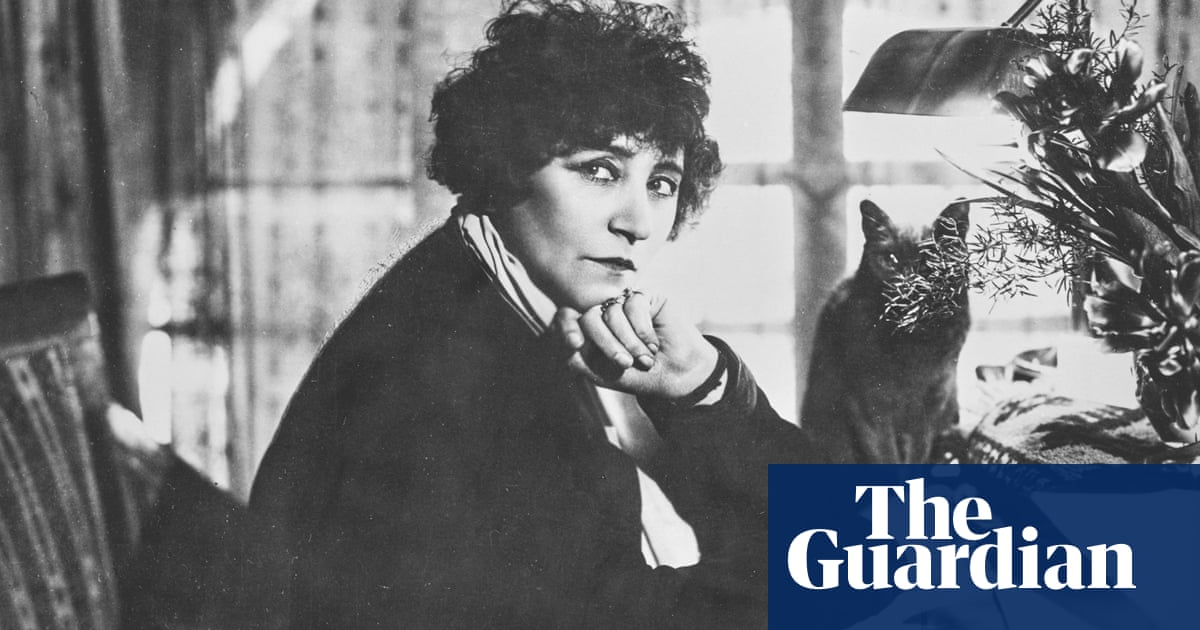‘It is a writing adventure to go in deep, then deeper, and then to play with surface so that we become experts at surface and depth,” writes Deborah Levy, and it’s as good a statement of intent as any in this collection, which delves into topics both trivial and profound: brothel creepers, car crashes, lemon curd, trauma.
The theme, insofar as there is one, is the artists who have inspired her. Many of these are women, and Levy writes skilfully on the complex interplay of self-presentation and effacement that’s often demanded of female creativity. Lee Miller “both hides from and gives herself to the camera”; Francesca Woodman makes “herself present by making herself absent”. Artists and writers invent things, but they invent themselves too. The first essay is about Colette, less her “transgressive and sensuous” writing, and more her author photograph (“I fell in love with her before I read any of her books”). In the image, Colette poses at her desk, chin resting on one hand, glamorous and sly in lipstick. Regarding Violette Leduc’s La Bâtarde, Levy says the autobiography “is probably an attempt to stage her life and in so doing witness herself as its main performer”.
The author-as-actor idea is intriguing, although it runs the risk of making these great writers seem a little hollow, as though their creativity is also charade. Levy herself seems to sense this, and grapple with it. Some roles are expansive, but others restrict. In a poem called X = Freedom, she addresses the surrealist sculptor and photographer Méret Oppenheim: “You do not want to be a female artist / You want to be an artist / You will struggle with this / As we all do / As I do.”
Levy is good on the prices we find ourselves paying: for art, for love, for fitting in. Of Ann Quin, the avant garde, working-class writer who drowned herself in the sea off Brighton, she says: “I want to know more about what it took to want to swim home and I know Quin could have told me.” In another short piece called Values and Standards, she writes about an acquaintance she sometimes meets at the school gates. This woman’s husband takes pleasure in humiliating her; to survive, “she had removed her own eyes and saw the world and herself through his eyes”. Levy wonders if she ever “puts her own eyes back in”, and considers her own narrowing of vision at times when “other things had become bigger. Perhaps overwhelming.”
More detail on those times would have been illuminating, but Levy never quite hands herself over. Instead, she gives us objects, bits and pieces: those spoons, cigarette lighters, the “non-human face” of things. Black boxes from planes crop up twice, as though to remind us of our role as reader-investigators. We have to work with what isn’t there as much as what is, because that’s the only way we can, as she puts it, “find the truths that [have] been dodged”. In a piercing essay on JG Ballard, she quotes the author’s explanation of why so much time elapsed before he was able to commit his experiences in an internment camp to the page: it took him “twenty years to forget and twenty years to remember”. Writing is self-excavation, a painful digging into the archaeology of our own experience.
Not every foray is successful. The 300-odd words of The Psychopathology of Everyday Café Life in Freud’s Vienna is too smug in its own self-awareness: “Ah, the fresh and full aroma of hysteria under a constellation of coffee cups!” A long A-Z of celebrity car crashes feels like not enough substance stretched across too much form.
But these are quibbles. Here is Levy on the French writer and film-maker Marguerite Duras: “She thinks as deeply as it is possible to think without dying of pain … She puts everything in to language. The more she puts in, the fewer words she uses.” At her best, Levy pulls off a similar feat, plunging into the depths, taking us with her.
